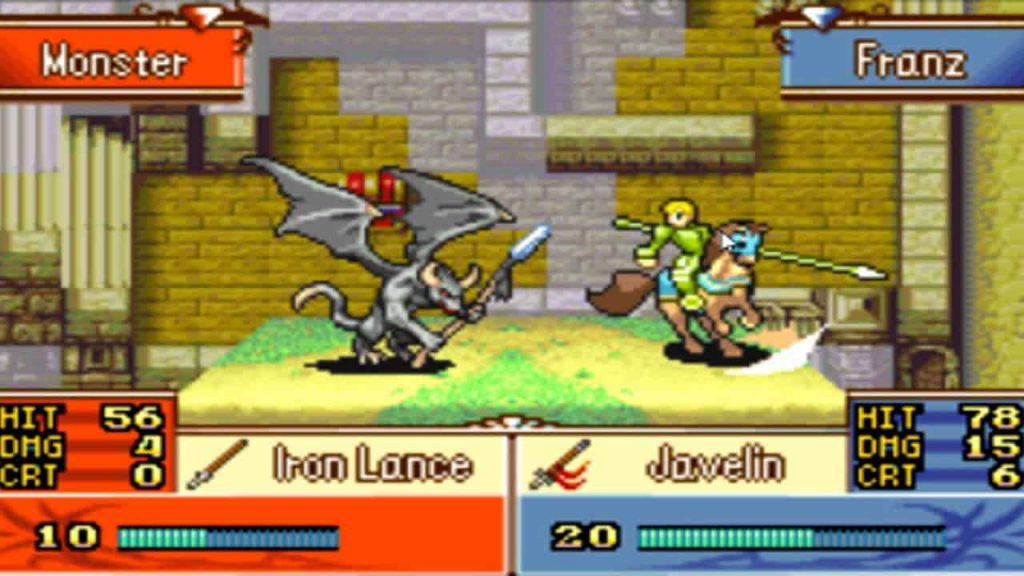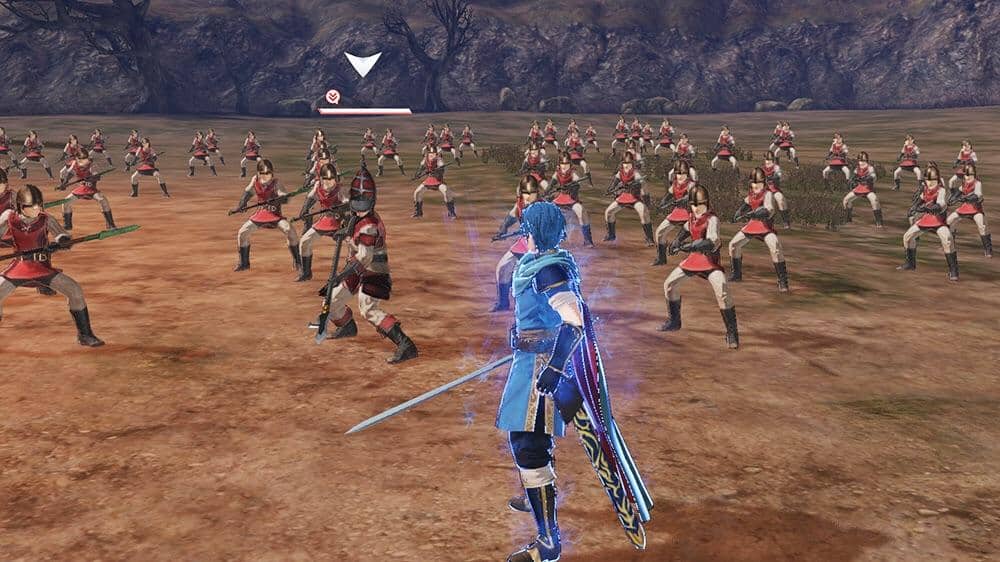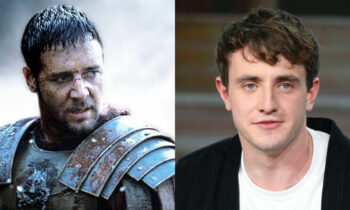Fire Emblem History And Origins Throughout The Series
Fire Emblem is a series that nearly didn’t make it. In fact, just a few years ago, fans all but knew the game was going to be cut from Nintendo’s production rotation, which we saw at the Comic-Con 2019 Lineup. Well, the 3DS title Fire Emblem: Awakening saved the series. Now, we’re entering a weekend in which a Fire Emblem game for console is releasing. Fire Emblem: Three Houses is releasing to great reviews across gaming journalism. The series is unique, and at the same time very familiar. Taking its roots from Japanese Role Playing Games (JRPGs) and tactical strategy games, the series contains a lot of gamer’s favorite elements of the medium. The story of Fire Emblem is pretty fantastic, so let’s look at some Fire Emblem history and origins.
Fire Emblem: The Birth of the Series
To understand the elements of Fire Emblem history central to the game’s origins, you have to start with Intelligent Systems Co.
Intelligent Systems Co.
Intelligent System Co. is a Japanese game company located in the Nintendo headquarters. The team originally worked in Nintendo’s Kyoto offices, but graduated to the main location in 2013. The team is most famous for working on the Famicom. This is the console that we know as the NES in the United States. They worked to move Japanese made games to the cartridges used outside of the country in places like the United States. They spent the early years working on these cartridge exports, leading to little major attention on the team. That being said, the team worked on a number of NES titles. These include Super Mario, Donkey Kong 3, and Duck Hunt.
Nevertheless, ISC’s head programmer, Tohru Narihiro, programmed two games as the Famicom began to transition over to the Super Famicom, or SNES. The first of which, Famicom Wars, is the first entry in the Wars series.
Intelligent Systems Co.’s Wars Series
The Wars series, often called Advance Wars, is a tactical based war game featuring two teams, aptly named the red and blue team. Famicom Wars marked the first in the series, followed by a few others before 2001’s Advance Wars. This Gameboy Advance title is still, to this day, an incredibly popular game. The game has a unique place in American history as well. It’s original release date was September 10th, 2001, just before the World Trade Center attacks. The rest of the world delayed the release of the game following the attack. Europe and Asia did not get the game until 2002 following the tragedy.
Numerous other Advance Wars titles followed, including releases on the DS and GameCube. England based Kuju Entertainment released those games.
Other Notable Intelligent System Co. Games
ICO had their hands on a number of other iconic games. Here’s a brief list of the highlights:
- Paper Mario
- Super Metroid (In partnership with Nintendo R&D1)
- Mario Kart: Super Circuit
- Super Paper Mario
- Super Smash Bros. Brawl
- Codename S.T.E.A.M.
- The Warioware Franchise
Paper Mario is probably the next most popular series from ICO, despite its recent decline in popularity. The game, despite its lack of appreciation for more than two decades, is still the team’s most popular series.
 Image Credit: Nintendo
Image Credit: Nintendo
Fire Emblem Games from the NES to the Gameboy Advance
Fire Emblem: Shadow Dragon and the Blade of Light (Famicom)
The other main series produced by Intelligent Systems Co., as you can imagine based on the purpose of this article, is Fire Emblem. The first title released for the Famicom and is titled Fire Emblem: Shadow Dragon and the Blade of Light. The game came out in Japan in 1990. and followed Prince Marth on his reclamation of the throne from an evil sorcerer. Initial sales were poor, and even critics seemed underwhelmed by the game. The game did cover a lot of battles, scenes, and features, leading to storage issues on the memory of the game. This led to a lot of graphical limitations, and even a cutdown of the storyline.
Japan did not take the game The West would not get this game on the NES, nor another Fire Emblem title until It’s not surprising this sentiment carried on for over two decades. The team at Intelligent Systems Co. would try to mix things up the second time, adding new mechanics which also fell flat.
Fire Emblem Gaiden (Famicom)
Fire Emblem Gaiden followed Shadow Dragon and the Blade of Light in 1992, two years after the lackluster debut. The title still included turn-based mechanics, but there was now a navigable overworld. The game also featured dungeon crawling, something that really makes the game stand out. Other Fire Emblem games do not feature dungeon crawling. The game takes place at the same time as Shadow Dragon and the Blade of Light, but in another part of the world. It sold well, pushing copies well through the early 2000s, but still lacked critical acclaim. Plus, the company would abandon its mechanic changes, at least partially, following no real benefit to their addition.
 Image Credit: Nintendo
Image Credit: Nintendo
Fire Emblem: Mystery of the Emblem (Super Famicom)
Fire Emblem: Mystery of the Emblem released for the Super Famicom in attempt to draw attention to the first game. The story plays out in two parts. The first is a remake of Shadow Dragon and the Blade of Light, and the second is an original story acting as its sequel. The game’s gameplay and story were popular. These two things would be central components of Fire Emblem games moving forward. Until Fire Emblem Awakening, the game was the best selling title in the series. Journalists loved it, and it was later remade for the Nintendo 3DS under the same name. The title also was included in the Japanese version of the Super Famicom Classic Edition.
Fire Emblem: Genealogy of the Holy War (Super Famicom)
Genealogy of the Holy War followed Mystery of the Emblem in 1996, still on the Super Famicom. The game featured a new story and soundtrack. The entire team for past Fire Emblem games returned, and all eyes were on a dramatic narrative. This is the game that led to a story-driven series. Fans and critics loved the game.
Fire Emblem: Thracia 776 (Super Famicom)
Coming just 3 years after Genealogy of the Holy War, 1999’s Thracia 776 was the final Super Famicom Fire Emblem game. Fire Emblem history would be made in this title as well, with it being the final title on a home console until 2005. The game built on the success of its predecessor, introducing a few new elements. Most notably, a fatigue system now caused characters to lose energy with each action. Despite popularity upon release, it is one of the poorest selling games of the series. Interestingly enough, an English language patch was introduced this year, 20 years after its debut. The title still did not receive a Western release.
Fire Emblem: The Binding Blade (Gameboy Advance)
The first Fire Emblem title released for the Gameboy Advance, The Binding Blade released in 2002. Originally, the game began as a Nintendo 64 title called Fire Emblem: Maiden of Darkness, but changes forced the project to handheld. It meant the entire abandonment of Maiden of Darkness and a complete redo.
This was the first game to feature Roy, a character only surpassed in popularity by Marth, the hero of the original game. No major mechanical changes came to this title, other than being a handheld version of the Fire Emblem experience. The only notable change was in difficulty. The original 5 games of the series were quite hard to beat all the way through. By removing the crazy difficulty, the game was a huge success. It was celebrated by critics and fans. The game never made it to the United States, but a few things pushed it to a port.
For starters, Advance Wars was a hit on the Gameboy Advance in the States. Between this, and the inclusion of Roy in Super Smash Bros. Melee, the game was localized for the West under the name Fire Emblem. It sold well, and led to more Western Fire Emblem releases for the duration of Fire Emblem history.
Fire Emblem: The Sacred Stones (Gameboy Advance)
The Sacred Stones followed The Binding Blade in 2004 for Japan and 2005 for the West. The story in The Sacred Stones was brand new, and even in a new continent. 5 nations fought, leading to a popular war of the families style narrative that would follow for the rest of the games. The game featured a some old elements, as well as a few new ones, including permanent death for characters. This would go on to be a huge feature of the series.
Another big addition was support conversations to gain advantages of units in battle. This element would develop into a core mechanic of the later Fire Emblem games. It sold well, and did okay in the West. Critics mainly said the game was too similar to The Binding Blade. This would be the last Fire Emblem game in Fire Emblem history to be released on the Gameboy Advance. Likewise, it was the last original story for handheld console release for Fire Emblem until the 3DS’ Fire Emblem Awakening.
Fire Emblem Games from the GameCube to Now
The turn to the GameCube and more home console titles would prove detrimental to the series. Diehard fans still played these games, but overall, it almost led to the cancelation of the series altogether.
 Image Credit: Nintendo
Image Credit: Nintendo
Fire Emblem: Path of Radiance (GameCube)
Path of Radiance is a huge point in Fire Emblem history. The game released in 2005. For starters, it was released on the highly underrated GameCube console. The game also featured 3D graphics, full motion cutscenes, as well as voice actors portraying the characters. The 3D aspect was challenging for the team, but in the end, it set the stage for the norm of future games in the series. Permanent death was back, as was the battle between various nations. It was also the first home console Fire Emblem release since Thracia 776.
The story and gameplay were celebrated immediately, but everyone hated the graphics. They were rough, even by early 2000s standards. The game sold well in Japan but not as well in the West.
Fire Emblem: Radiant Dawn (Wii)
Radiant Dawn, released in 2007, is a direct sequel to Path of Radiance. The game’s development began immediately after the release of the GameCube title. A lot was the same this time around, and the game sold well everywhere in the world. The only issue for many was the return of the high difficulty well known in Fire Emblem history.
 Image Credit: Nintendo
Image Credit: Nintendo
Fire Emblem: Shadow Dragon (Nintendo DS)
Shadow Dragon moved things back to handheld, but with no original story. The 2008 release in Japan followed by the West’s release in 2009 is a remake of Famicom’s Fire Emblem: Shadow Dragon and the Blade of Light. You’ll remember, this is the first game in the entire series. It’s great that it got remade, because the West never got an NES release of the original version of Fire Emblem: Shadow Dragon and the Blade of Light. Artwork saw some new changes and music is updated as well. Despite being a remake, many called it a high quality game.
Fire Emblem: New Mystery of the Emblem (Nintendo DS)
New Mystery of the Emblem released shortly after Fire Emblem: Shadow Dragon in 2010. The game is based on content from Mystery of the Emblem. The difference this time is the ability to make an avatar to play as alongside Marth. This game also introduced a casual mode, where dead characters do not permanently die. Unfortunately for the West, this game stayed exclusive to Japan, the first exclusive title in Fire Emblem history since 2002’s The Binding Blade. It sold well, and received great acclaim.
 Image Credit: Nintendo
Image Credit: Nintendo
Awakening (Nintendo 3DS)
In 2012, Japan got its hands on Fire Emblem Awakening, followed by the West in 2013. The game featured a relationship building system to improve abilities, as well as difficulty levels, casual modes, and a multiple camera perspective. The game takes place 2 millennia after the original Fire Emblem and Fire Emblem Gaiden. Avatar characters were back, as you fought alongside popular characters from throughout Fire Emblem history. At the time of its release, the team at Intelligent Systems Co. was being supervised by Nintendo closely, due to poor sales of the last few titles. With another bad release, the game was likely going to be canceled. Instead, it became one of the best games on the 3DS, and is the largest commercial success of any Fire Emblem game.
Fates (Nintendo 3DS)
Fates released in 2016 internationally, after a 2015 Japan release. The game released in three versions, named Birthright, Conquest, and the downloadable Revelation. Each featured a different storyline to play through. The characters were the same across all versions. Much of the game is similar to Awakening, minus the story. It received great reviews. Due to a low difficulty, Birthright is recommended for newcomers to the series.
Echoes: Shadows of Valentia (Nintendo 3DS)
Shadows of Valentia came out in 2017, updating everything minus the story from the title its based on, 1992’s Fire Emblem Gaiden. The game sold well, and received great reviews all over the world.
 Image Credit: Nintendo
Image Credit: Nintendo
The Latest Game in the Series
The newest game in Fire Emblem history actually released this weekend. Three Houses is the first console game in Fire Emblem history since Raidant Dawn in 2007. Choosing between three houses to play and fight as, players have a number of experiences to explore in this release. Early reviews are incredibly positive, averaging somewhere in the 90s on a 100 point scale. It takes a lot of inspiration from Genealogy of the Holy War.
The Lasting Impact of Fire Emblem
Fire Emblem history is full of ups and downs. Nevertheless, the series is as popular now as ever, in part thanks to a free to start mobile game developed by Nintendo called Fire Emblem Heroes. The strategy genre in video games, as well as the JRPG genre, is widely popular all over the world. Three Houses, if it sells well, should solidify the series’ place in video game and Fire Emblem history as a longstanding IP for Nintendo. Now, if you’ll excuse me, I have to go play as much of the new release as possible.
Keep reading Comic Years for everything gaming, comic book culture, and more!
Taylor is the Gaming Editor of Comic Years and a lifelong fan of video games. He holds two degrees in Political Communication and wrote a Master's Thesis on resistance movements, race, and the exploitation of college athletes. His wife and two Toy Australian Sheppards keep him sane.









Leave a comment